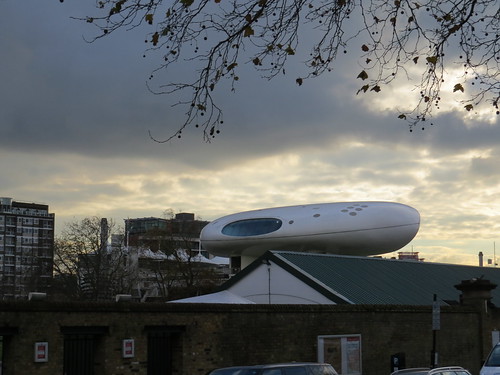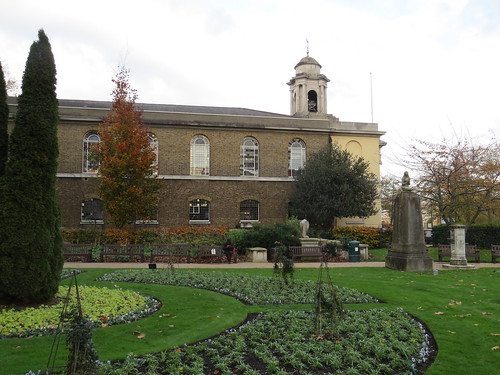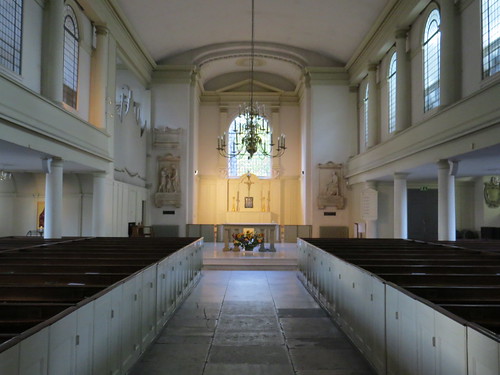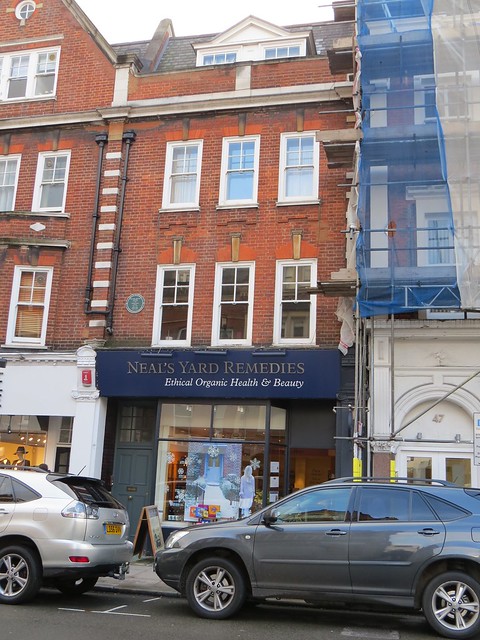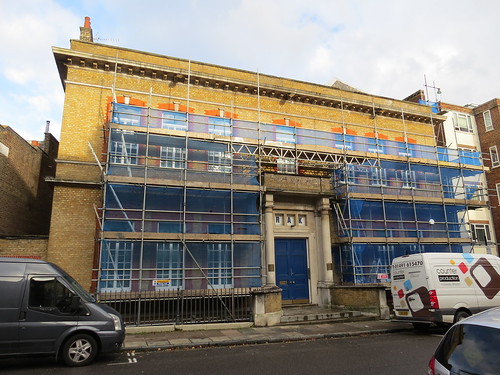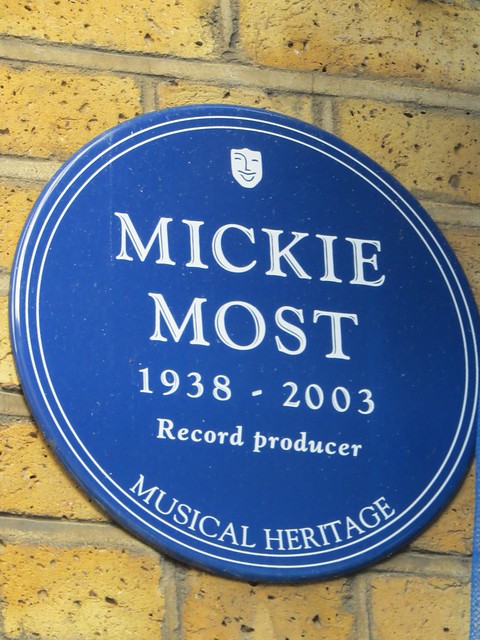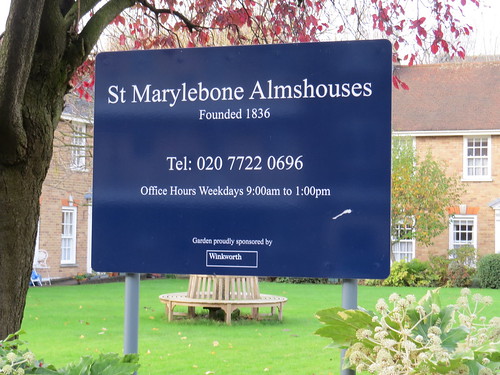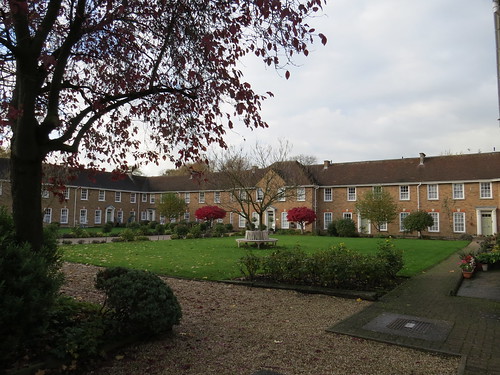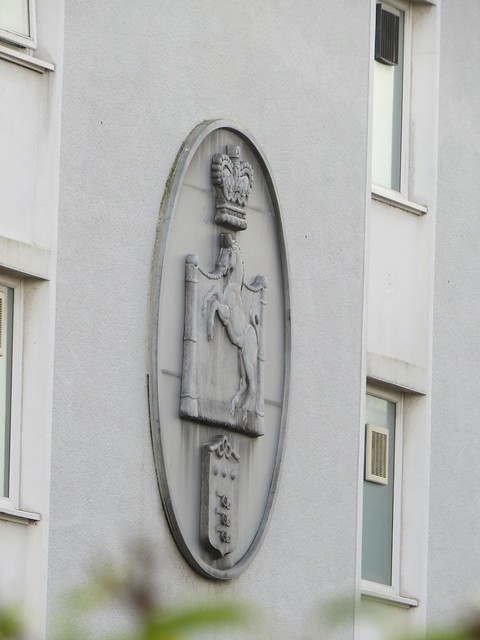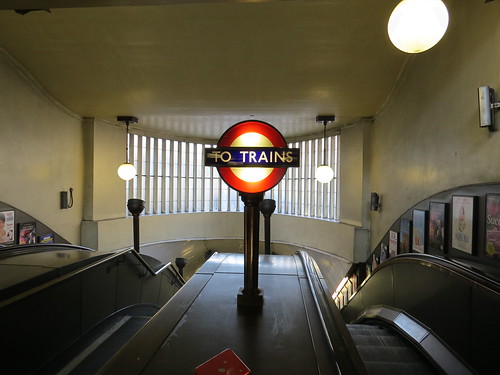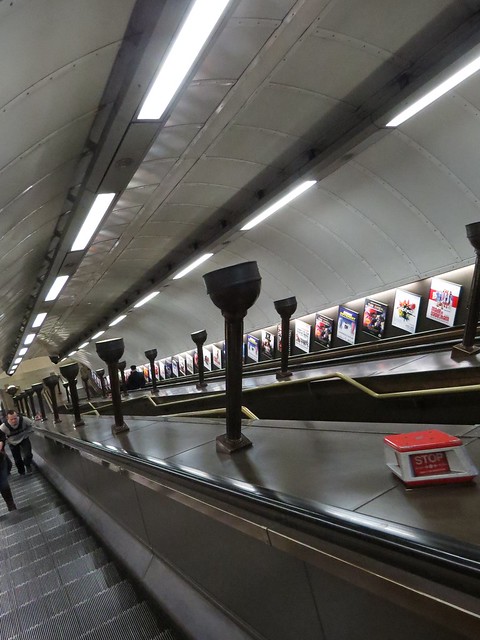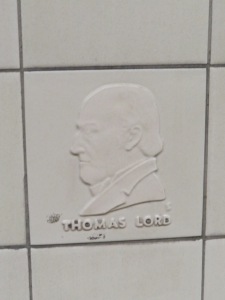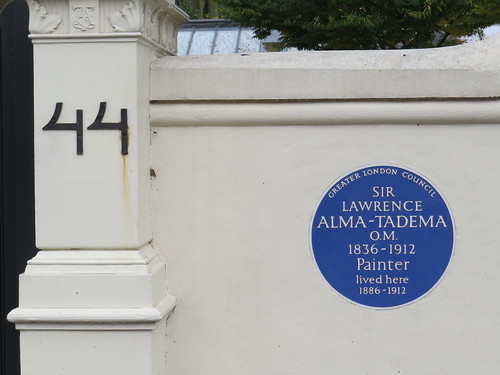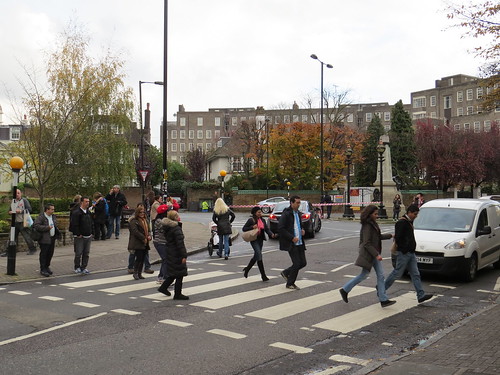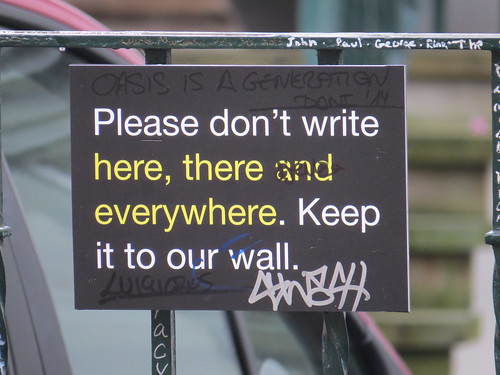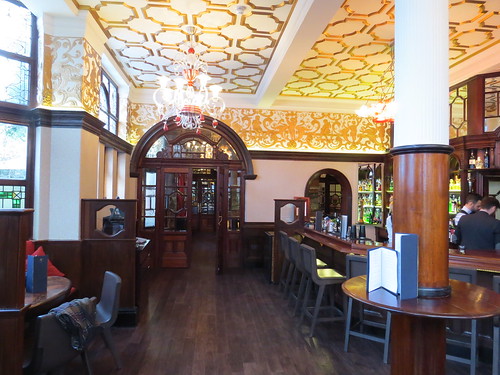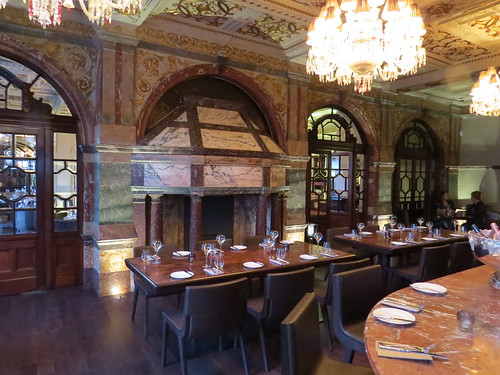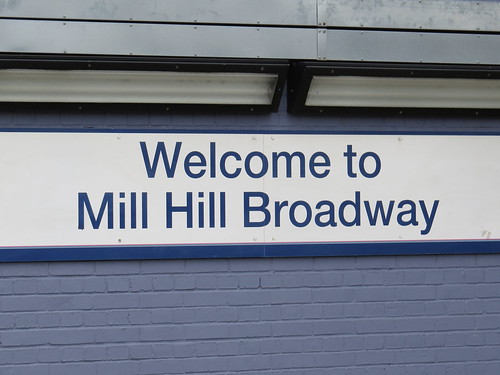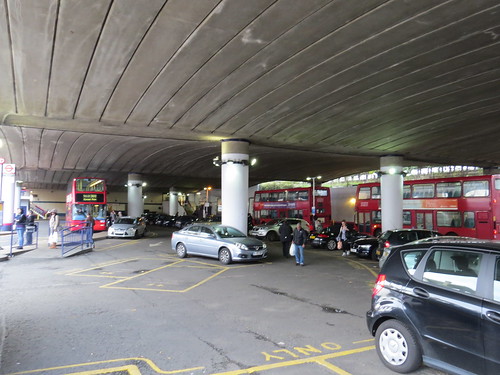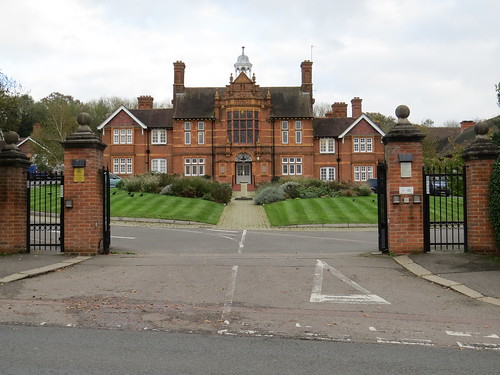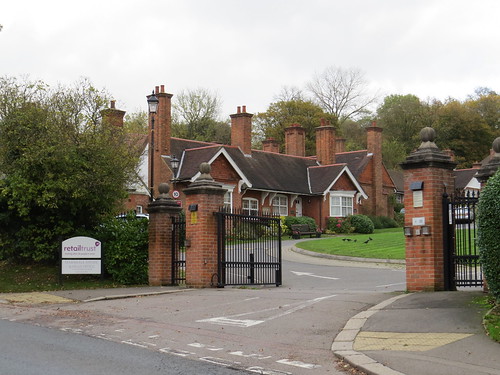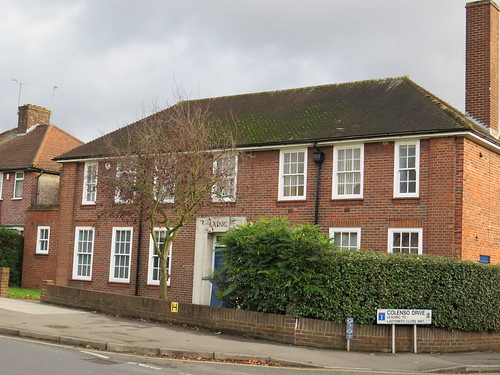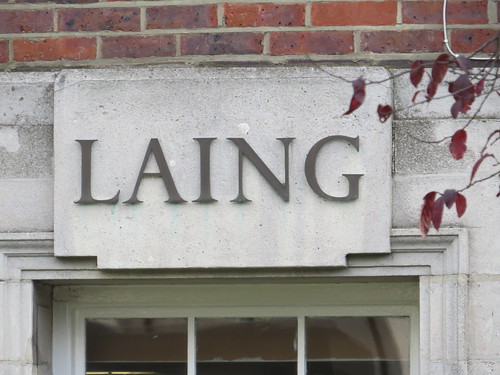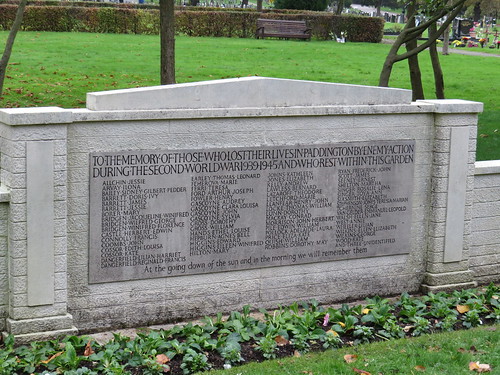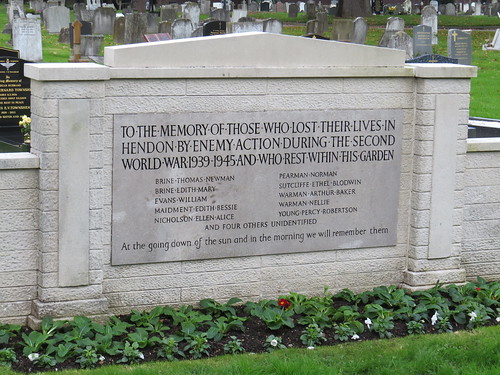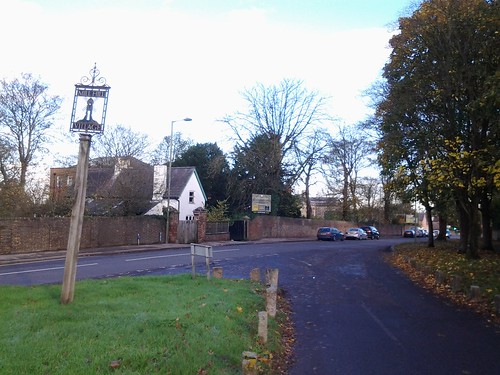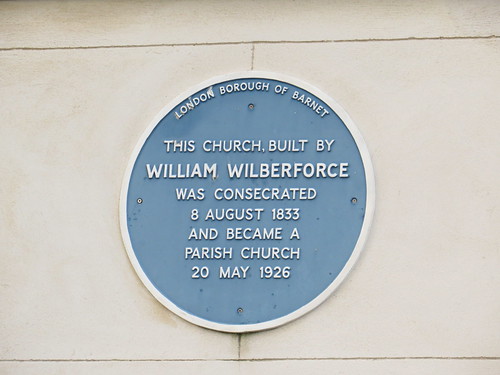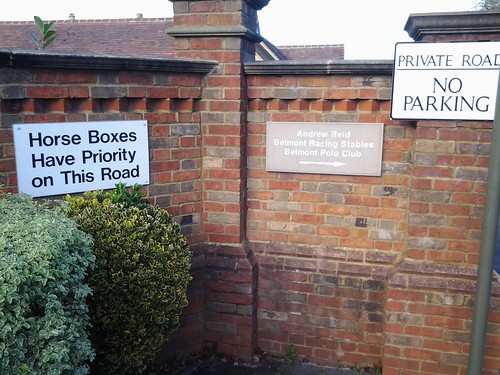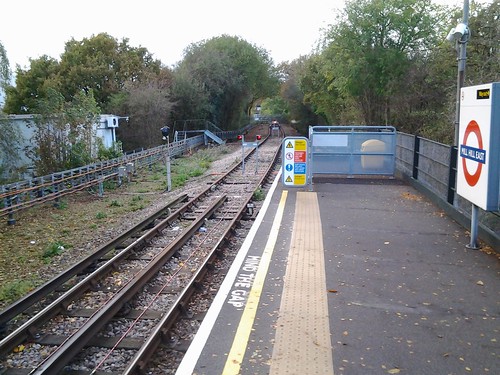NW8 is St John’s Wood – home of Lords Cricket Ground and two recording studios amongst other things. And a lot of blocks of flats.
We start our walk at the Post Office at 28 – 32 Circus Road, NW8.
Take a right out of the Post Office and cross Wellington Road. Then take the first left and our next stop is almost immediately on your left.
Stop 1: Number 1 Cavendish Avenue
This was the home of the singer Billy Fury.
We saw the alley named after him in NW6 and where he was buried in NW7. So this is a first – to feature the same person on three consecutive postcodes! Not sure exactly when he lived here though.
Continue walking along Cavendish Avenue and follow the road as it turns left becoming Wellington Place. We are alongside our next stop.
Stop 2: Lord’s Cricket Ground
Well we could hardly come to St John’s Wood without seeing Lord’s Cricket Ground.
In 1950 the architectural historian Pevsner was of the opinion that this was “a jumble without aesthetic aspirations, quite unthinkable in a country like Holland or Sweden”. But since the mid 1980s various dramatic additions have been made – the one which is really visible from outside is the media centre, a tube made of aluminium dating from the late 1990s.
Lord’s maybe a bastion of “the Establishment” but the name as no connection with the House of Lords, as some people might think. It was actually established by a man called Thomas Lord (1755 – 1832). He was a professional cricketer who made 90 known appearances in first class cricket. He was mostly associated with Middlesex and with Marylebone Cricket Club (MCC) .
I always thought it odd that MCC was here given this is not actually Marylebone. However it was within the old borough of St Marylebone and actually the first Lord’s cricket ground opened in 1787 was a stone’s throw (or should I say a cricket ball’s throw) from Marylebone station, in Dorset Square.
Lord relocated in 1811 to a site at Lisson Grove but had to move again after three years because the land was needed for the Regent’s Canal. So finally it got to the present site in 1814, so this ground has been used for cricket for 200 years.
More about Lords on this link: http://www.lords.org/history/
We will see one of the entrances in Wellington Place. Passing this, turn right into the main road (Wellington Road) and continue along the side of the ground to the roundabout.
Look back and see this panel at the corner.
Cross the road and our next stop is right ahead.
Stop 3: St John’s Church and gardens
Not surprisingly the church is called St John’s.
The land here was bought in 1807 for a burial ground and the church was completed in 1814. Initially it was a Chapel of Ease for St Marylebone (ie a subsidiary church within the parish) but it later became a parish church in its own right.
It has a very stark interior – all dusky white with very uncomfortable looking box pews.
Walk into the gardens (the former burial ground) to the left of the front of the church and exit at the far side into Wellington Place. Going out of the garden here, turn right and go along Wellington Place until you reach St John’s Wood High Street where you will turn left.
Perhaps we might pause a while at this junction whilst I explain about a little footnote in history of dog ownership.
In early 1992, I was working at the Department of the Environment and charged with implementing new legislative provisions requiring local authorities in England and Wales to have dog wardens. To co-incide with this, the Department ran a campaign to encourage people to clear up after their dogs. This was launched by the then newly appointed junior Environment Minister, Lord Strathclyde. But where to have the launch?
As it happened I discovered that Westminster Council had just put up two poop scoop vending machines in St John’s Wood (they were condom machines converted to dispense poop scoop plastic bags). So I suggested that the launch should be here – and it was! The machines are long gone but they were alongside these gardens. And I guess it is a measure of how far we have come that it is generally the norm now that people do pick up after their dogs.
That was a great job (really! I got a lot of responsibility because no one wanted to be associated with this policy area, so I was left to get on with it).
And as I used to say: “It may be dog mess to you but it’s my bread and butter”
Walk along the High Street to Number 45a.
Stop 4: Number 45a St John’s Wood High Street
This stop is just opposite the junction with Allitsen Road and, as you can see from the plaque, composer Benjamin Britten (1913 – 1976) and singer Peter Pears (1910 – 1986) lived and worked here between 1943 and 1946. I am guessing in the flat above the shop rather than the shop itself.
Seems a strangely unprepossessing location to find they lived, but Britten did also have a house in Suffolk he had bought with a legacy from his mother. Britten was a major figure in 20th century British classical music. But it was only with his work Peter Grimes in 1945 that he became internationally known.
Go down Allitsen Road until you reach Charlbert Street
Stop 5: RAK Recording Studios
Just ahead of you to the right in Charlbert Street you can see our next stop.
The studios were set up by RAK records which was created by legendary record producer Mickie Most (Michael Peter Hayes: 1938 – 2003). He was part of a duo in the mid 1950s called the Most Brothers and in 1959 he renamed himself Mickie Most. He had quite a bit of success in South Africa but apparently tired of the touring.
After a spell selling records he got into producing and ended up producing some of the famous hits for groups such as the Animals (including House of the Rising Sun) and Herman’s Hermits (including I’m into Something Good) . Other artists associated with him were Lulu, Donovan, Suzy Quatro and Kim Wilde.
In the late 1960s he got into management, and in 1969 started his own record label (RAK records) and his own music publishing business, The name RAK is said to hark back to the days when he was selling records and displaying them on racks. Then in 1976 he opened his own recording studios here in a converted Victorian school house in NW8. RAK records was sold to EMI in 1986.
A bit more info on RAK studios website: http://rakstudios.co.uk/history
Go up Charlbert Street away from RAK studios (as if you had done a left turn off Allitsen Road). At St John’s Wood Terrace turn right and a little way on the left past the former Chapel with columns is our next stop.
Stop 6: St Marylebone Almshouses
These almshouses are at the corner of Woronzow Road.
Count Simon Woronzow was Russian Ambassador to the United Kingdom from 1784 to 1806. He lived in the area and on his death in 1832 he left a bequest for the poor of the parish. The money was used to build these Almshouses in 1836 but what we see today is a 1960 rebuild. More info on this link:
http://www.londonremembers.com/memorials/count-simon-woronzow
Retrace your steps along St John’s Wood Terrace and then right into Ordance Hill. It does not look much of a hill but the name Ordance does give away the original function of our next stop, which is up on the left about opposite Norfolk Road.
Stop 7: former St John’s Wood Barracks
Some troops had been billeted in farm buildings here from 1804. But in 1810 the Board of Ordnance decided to base an artillery brigade here on land leased from the Eyre family who had acquired most of the land hereabouts in 1732. In 1823 the Cavalry Riding Establishment moved in and a new riding school was built for them in 1825.
In 1880 the Royal Horse Artillery moved in and continuously occupied the barracks until February 2012, when the lease expired.
In November 2011 Ananda Krishnan, a rich Asian businessman, acquired the Barracks from the Eyre estate for £250m. The site is set to be developed as a residential estate and the 1825 Riding School (which is Grade II listed) will apparently be used to accommodate a gym.
There is an interesting looking relief on one of the buildings, but I could not get any closer.
Continue along Ordance Hill and turn left into Queens Road. Our next stop is at the corner of the main road on your right.
Stop 8: former Marlborough Road station
This was the street level building of Marlborough Road station which closed in 1939.
It had opened in April 1868 on the northward extension of the Metropolitan Railway from Baker Street (which later became the Metropolitan line).
One little oddity about the station name is that the actual station fronts onto Queens Grove. Marlborough Road was on the other side of the main road but was renamed Marlborough Place in the 1950s.
Having turned left into Wellington Road, walk down here to the junction with Acacia Road. Just here is the “new” tube station, which was given the name St John’s Wood.
Stop 9: St John’s Wood Underground station
This is a lovely station and although it no longer has the original wooden escalators, it has retained the uplighters on the escalators.
Today Transport for London gives St John’s Wood an apostrophe on maps and publicity whereas it does not have one in the tiling or signs on the platform.
The stations built in this period had an unusual quirk in the tiling. Every so often there would be a tile with a picture or symbol on this. Sometimes but not always it was related to the station location. Here of course at St John’s Wood we have Thomas Lord.
Useless fact: The station is apparently the only London Underground station whose name does not include any of the letters in the word “mackerel”
Cross over Wellington Road outside the station and go down the side road (Grove End Road). Our next stop is a little way along on the right.
Stop 10: Number 35 Grove End Road
This is one of the last survivors of the original buildings which were put up when this area was first developed in the 1820s and 1830s with detached and semi detached villas. Pevsner says “there was not much of individual note but the whole area had until the early 2oth century a character all of its own, a comfortable verdant, early Victorian character, never showy and never mean. It was largely destroyed by the building of large blocks of flats.”
Anyhow in the shadow of one of those blocks of flats is number 33 – home of Sir Thomas Beecham (1879 – 1961).
Sir Thomas Beecham was an English conductor and impresario. He was best known for his association with the London Philharmonic and the Royal Philharmonic orchestras but he also had associations with the Liverpool Philharmonic and Hallé orchestras.
He was born to a rich industrial family in Lancashire. In 1842, his grandfather created a laxative marketed as Beechams Pills and this was the start of the famous Beechams company, now subsumed within SmithKlineGlaxo.
Thomas Beecham started conducting in 1899. And for many years, he used his access to the family fortune to finance opera.
There is a great quote attributed to him:
“There are only two things requisite so far as the public is concerned for a good performance: that is for the orchestra to begin together and end together; in between it doesn’t matter much”
Our next stop is across the road.
Stop 11: Number 44 Grove End Road
This was home of artist Sir Lawrence Alma-Tadema, (1836 – 1912). He was actually Dutch and trained in the Royal Academy of Antwerp, Belgium. He came to England in 1870 and spent the rest of his life here. He became famous for his depictions of the luxury and decadence of the Roman Empire, with scantily clad women draped in fabulous marbled interiors or against a backdrop of dazzling blues of the Mediterranean.
Keep walking along Grove End Road until you reach the junction with Abbey Road. Just over the way is the famous Abbey Road recording studios and that zebra crossing.
Stop 12: Abbey Road studios
Abbey Road Studios was established in November 1931 by the Gramophone Company, a predecessor of the famous record company EMI.
It was known for many years as the EMI studios and was only renamed Abbey Road studios in 1970 after the Beatles Abbey Road album had been issued.
Abbey Road Studios are regarded as the earliest, as well as the best-known, purpose-built recording studios in the world. After a scare in early 2010 that the studios might be sold for development the Government gave the studios Grade II listed status in February 2010, and its future does look more secure.
Following is an extract from the listing information on the Heritage Gateway site – www.heritagegateway.org.uk (I cannot seem to link to the actual page but you can find this by searching the listings using the exact phrase “Abbey Road Studios”)
“They were opened by Sir Edward Elgar in November 1931 and were used by a wide range of outstanding musicians. The studios cost £100,000 to buy, build and equip: the project was started by the Gramophone Company in 1929, which was soon after subsumed within the Electric & Musical Industries (EMI) company. Artists who have recorded here include Arthur Schnabel, Fats Waller, Noel Coward, Glen Miller, Marlene Dietrich, Gracie Fields, The Beatles, Pink Floyd etc. Abbey Road is known particularly for its close connection with The Beatles, over 190 of whose 210 recordings were made here with George Martin: their 1969 album was even named Abbey Road. Pink Floyd’s 1973 album ‘Dark Side of the Moon’ was recorded here in Studio Three. The studios are listed primarily for their considerable cultural importance and their place in the history of popular music, as well as their importance as a notable manifestation of the fast-developing technology of sound recording. The areas possessing special architectural and historic interest can be closely defined as Studios One and Two, and the street frontage.”
By the by, the first recording of George Harrison’s “My Sweet Lord” was by Billy Preston and not recorded here but at Olympic Studios. But the famous version by George was recorded here at Abbey Road in 1970.
And of course you cannot come to Abbey Road without using the famous Zebra Crossing
Except it is said that some years ago Westminster Council moved it so it is not exactly in the place where the famous Beatles picture was taken. The Heritage Gateway site says:
“… comparison between the [album] cover photograph and its present position suggests that it may have been moved a little to the north, closer to the studio gates, but it has not been possible to confirm this. Whether or not it is the same crossing depicted on the album cover or one very close to the original site, it remains a place of pilgrimage, with the studios, for Beatles fans from all over the world. Groups of tourists always gather to photograph the crossing and walk the walk and there is a live video streaming web-cam.”
Here is the link to the webcam, so you can check out who is crossing whenever you want!
http://www.abbeyroad.com/Crossing
And the crossing was given Grade II listed status by the Government in its own right in December 2010.
(But see the comment from Charlie which has a couple of links which set out the case that the crossing has not in fact moved!)
And I do love the sign at the front reminding people there is no public access to the car park at the front – this is a working studios afterall.
and please only to write on the wall (that worked didn’t it)
So this is the end of our NW8 walk proper. If you want to stop here, retrace your steps back along Grove End Road and you will be at St John’s Wood station. But if you have a moment, I do have this post script.
Post script:
I really wanted to include Crocker’s Folly in the walk. However I could not quite work out how to include it. Anyhow it is so special I had to include it as a postcript. To get there from Abbey Road studios walk down Grove End Road away from the studios and turn right into St John’s Wood Road. Go down the first left (Cunningham Place) and Crocker’s Folly is ahead on the corner with Aberdeen Place.
This Grade II* listed former pub was built in 1898, and was previously called “The Crown”.
In 1987, the pub’s name was changed to Crocker’s Folly. The story was that Frank Crocker built his hotel to serve the new terminus of the Great Central Railway. The station was actually built was about half a mile away at Marylebone. The legend goes that this lead to Crocker’s ruin, despair and eventual suicide, jumping from the window of an upper floor. Apparently this is an urban myth. Crocker did die in 1904, aged only 41, but of natural causes. But it is said that Crocker’s ghost haunts the building.
The highlight is the “grand saloon” as it was originally known. This has an exceptional marble fireplace, as well as a marble-topped bar counter, marble faced walls and a partly gilded beamed ceiling.
More info on this link to Camra’s website:
http://www.heritagepubs.org.uk/pubs/national-inventory-entry.asp?pubid=53
And you can go and have a lovely meal there in these beautiful surroundings. Not cheap but not mega expensive either – well worth a visit
So that really does bring us to the end of NW8.
If you are at Crocker’s Folly, you can walk down Aberdeen place to Edgware Road and buses.




